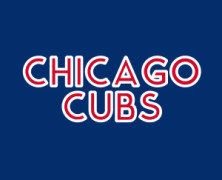Chicago Cubs
THE HISTORY OF THE CHICAGO CUBS
General Custer was fighting Native Americans in the Battle of the Little Bighorn while the Cubs were playing baseball just two states away.
The Cubs, one of the sport’s oldest teams, began play in 1876, the first year of the National League. They actually existed five years prior to this, as they were also in the National Association from 1870 to 1875. They were playing baseball in Chicago before the invention of the automobile, the radio, the electric light bulb, the telephone; they played before the Wright brothers took off in their airplane. Named the Cubs in 1903, the team was originally known as the White Stockings from 1876 to 1889. They were called the Colts from 1890 to 1897, and the Orphans from 1898 to 1902.
Fans arrived at the ballpark in horses and buggies, and were often part of a pastime that would chase dishonest umpires out of the park. These were very exciting days; baseball was the new craze and the Cubs were there from the very beginning. Never before has a team been loved by loyal fans as we find in Chicago.
Al Spalding was their first manager in 1876, and they became the first team to win the pennant. That year they outscored their opponents 624 to 257 and had a team batting average of .337, which to this day is the second highest in baseball history. (The Phillies in 1894 had a team average of .349.)
The Cubs astounded the baseball world in 1884 by belting 142 home runs when the best any other team could do was 39. This was a tremendous number of home runs when one considers this was during the low-scoring dead ball era.
The Cubs won the pennant not only in 1876, but also in 1881, 1882, 1885, and 1886. They ran into hard times then, until the infield of Joe Tinker, Johnny Evers, and Frank Chance excited the baseball world with play never before seen.
This famous combination won four pennants—three in a row from 1906–08 and again in 1910. The Cubs would also win pennants in 1918, 1929, 1932, 1938, and 1945.
The Cubs have had many outstanding players during their marvelous 128-year history. To mention a few who have been inducted into the Hall of Fame: Chance, Tinker, Evers, Cap Anson, Al Spalding, Roger Bresnahan, Rabbit Maranville, Rogers Hornsby, Gabby Hartnett, Frankie Frisch, Lou Boudreau, Leo Durocher, Ferguson Jenkins, John Clarkson, Billy Herman, Three-Finger Brown, Hack Wilson, King Kelly, Hugh Duffy, Billy Williams, Kiki Cuyler, Billy Williams, and Ernie Banks.
These extraordinary players have made the Cubs one of the most exciting teams in baseball history, and they have been rewarded by exceptional fan loyalty.
“There is no remembrance of former things; neither shall there be any remembrance of things that are to come with those that shall come after.” —Ecclesiastes
Or as the late Jimmy Cannon said, “Eventually, all is lost in the fog of time.”
Author and baseball historian John A. Mercurio will not allow this loss to happen in regards to baseball records and the great players of the past.
Typical record books eliminate old records when new ones are created and do not attempt at preserving records and paying proper homage to older heroes. Mercurio, however, will post every record ever created by every player in Chicago history in chronological order. Never eliminating a record, but rather adding each new mark to the chronology lists. In this way, we have a complete history of every record, from 1876 to the present. This assures that no player or his records will ever be forgotten.
The chronology lists also reveal how the length of each record and a timeline of players breaking others’ records. In this way, it’s very easy to see which records stood the test of time, including those which have never been broken.
By placing records in chronological order, they are easy to count. This makes it possible to answer the questions: Which player has the most records? Who has the oldest records? Who has the most unbroken records? This information presented simply and clearly helps readers determine who have been the greatest players in Cub history.
After counting the number of records established by each player, they are placed on a newly developed Record Holders List. This list is complete with the Original Record Setters and the following Record Breakers.
Another spectacular new feature is the Individual Record Profile. This profile is a compilation of every record of the greatest Cub players. It is also in chronological order, showing how long each record lasted, who broke whose record and all records which remain unbroken. Readers will find that many relatively unknown players have outstanding profiles and this gives them worthy recognition.
The final chapter of this book is devoted to an all-inclusive profile called the Players Claims to Fame Profile. This profile not only highlights every player record, but also includes every accomplishment which has made a player famous. These include the Hall of Fame, MVP, Rookie of the Year, Gold Glove, No-Hitters, Perfect Games, Batting, Pitching and Fielding Titles won, All-Star status, World Series records, and Milestone Achievements.



